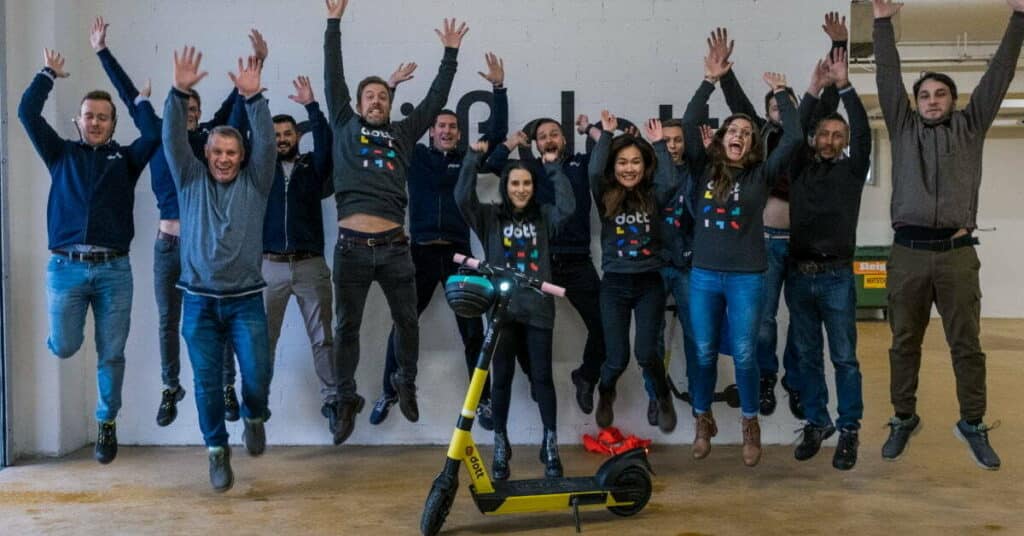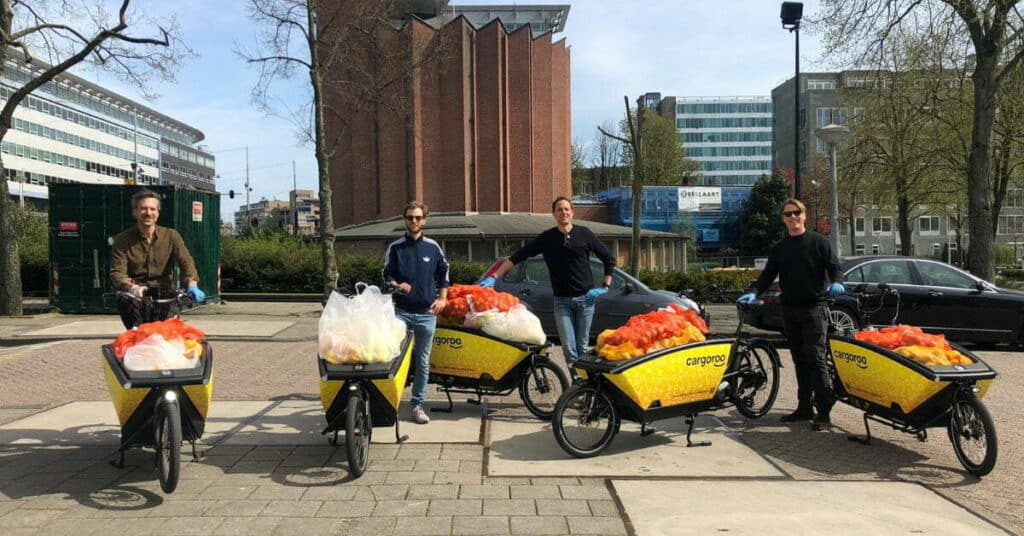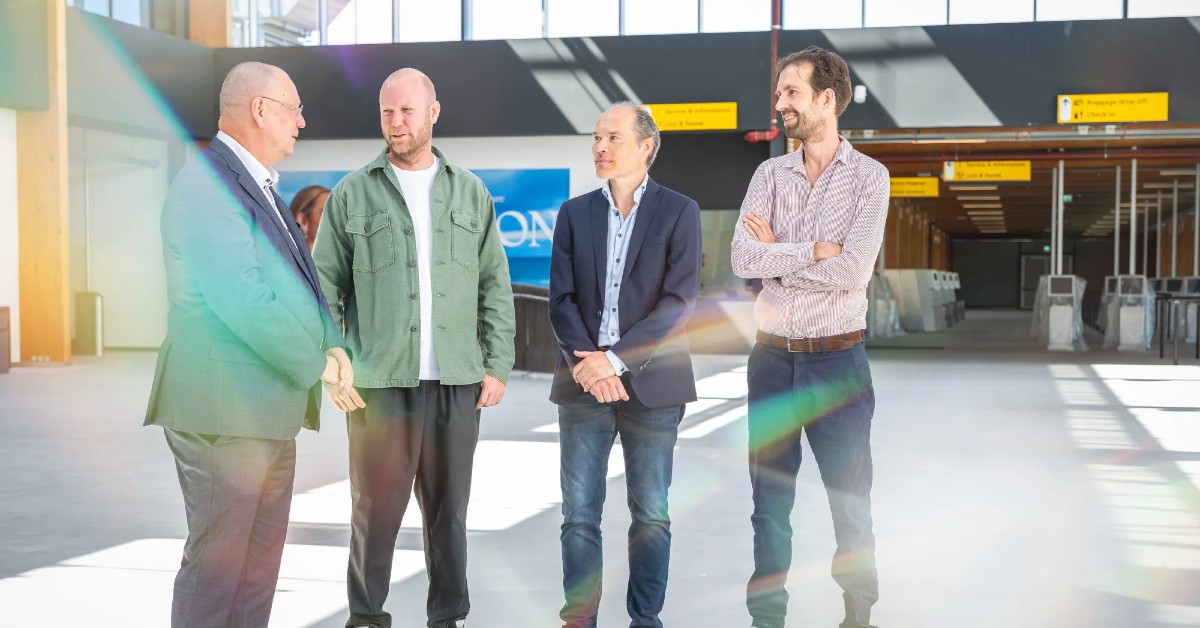With some European cities, including Amsterdam slowly getting back to normal life after quarantines and lockdowns, one of the questions popping in everyone’s mind is: ‘how are we going to get around?’ Sitting in a crowded bus, tram or train seems scary, with a deadly virus still on the loose. But everybody in their own cars will clog cities up in no time. Bicycles and e-scooters seem the way to go.
Do follow our special coverage on coronavirus over here.
COVID-19 and the future of mobility
The lockdowns as a result of the spreading of the coronavirus, resulted in empty city centers. It has given legislatures an opportunity to push the reset button and rethink the way their city operates. More and more cities around the world are adapting their infrastructures to cater for individual, sustainable and efficient modes of transport. In the UK, London pledged £2 billion to reduce car traffic and stimulate cycling. Paris is rapidly rolling out temporary cycling lanes that might just be permanent. In Italy, Milan is turning 35 kilometers of its streets from roadways to bicycle paths this summer.
The measures following the COVID-19 outbreak seem to kickstart a worldwide revolution on mobility. And where better to find ideas that are well ahead of the curve, than in the capital of cycling: Amsterdam. We spoke with the local startups including VanMoof, Dott, Felyx and Cargoroo to find out what they are working on and what their future currently holds. And these mobility startups are in the perfect position to shape this future.
VanMoof is trying to keep up with demand
For e-bike manufacturer VanMoof from Amsterdam it’s been pretty much downhill for the past couple of months. In cycling terms, this means everything has been going incredibly fast and unbelievably smooth. Shortly after launching their two new e-bikes, the VanMoof S3 and X3, they announced they raised €12.5 million to scale up their production. “Everything that we expected to happen in the next ten years, suddenly happened in three months”, says co-founder Taco Carlier on the phone.
Like a cyclist speeding down a mountain road, the funding round was closed at breakneck speed. “I think everything was done in about five weeks”, says Carlier. “We weren’t actively looking for new investors. But with COVID-19 currently changing the world, we noticed enormous traction behind our brand. If we wanted to capitalise on that, we needed to invest and scale up our operation.” Admittedly, those five weeks covered only the last track of the funding round. “We’ve had coffee with these investors a couple of times before. If you want to raise this amount of money, starting with no contacts, it’ll take a lot longer. Especially now, when everyone is working from home. You really want to look each other in the eyes, before doing business together.”
VanMoof set itself some ambitious targets at the beginning of the year. After quadrupling revenue last year, they wanted to continue their growth by doubling it again this year. That was before COVID-19 threw the world, as we know it, upside down. According to Carlier, VanMoof is already on track to beat its own projections. “But it hasn’t been easy. We had events planned in Milan and San Francisco to launch our new bikes. We seriously considered to postpone them, before moving it online. And keeping your level of service up to par is difficult, when customer support is working from home.”

Dott is working with cities and transport operators
VanMoof seems to be uniquely positioned to reap the rewards of the changing mobility landscape in the world. But individual transport comes in many shapes and sizes, of which Dott proves to be a good example. The shared e-scooter startup with a headquarter in Amsterdam is making sure to become a part of this future by doing a couple of things at once, explains Dotts head of marketing Matthieu Faure. “First off we are sharing our aggregated data when relevant to better understand parking and usage.”
“We are also collaborating with cities on creating dedicated parking spots for e-scooters and we are working with other transport operators to avoid public transit congestion.” For example, Dott partnered with the city of Brussels to provide extra scooters at Park + Ride-locations to enter the inner city. It also works with the public transport operator in Paris, which pushes Dott as an alternative for their users.
“We strongly believe shared micro mobility will play a big role in the coming months and years to come,” Faure says of the rapid transformation of infrastructure in many cities. As an individual mode of transport, the shared e-scooters can play an important role there, he thinks. During the lockdown in several countries, Dott stepped up and made their solution available for healthcare workers and supermarket personnel to safely get to work, without sharing public transport with others. Something Dott will keep on doing once lockdowns have ended. Founded in 2018, Dott has raised €50 million funding so far. They are operational in Brussels, Paris, Lyon, Munich, Turin, Augsburg, Bonn, Cologne and Warsaw while adding more cities coming June.
Faure says, “Since the end of lockdown, we’ve launched new packages to make e-scooters more accessible for regular riders. This is permanent, for all riders. We’re also working on continuing some partnerships with hospitals or other organisations, including providing dedicated Dott scooters to their staff.”

Felyx jumped to delivery
Just like Dott, Felyx also welcomed a new group of users to ease the pains of lockdown. The mobility startup from Amsterdam also offers shared e-scooters, although these are the kind you sit on. This makes them suitable for companies to make deliveries, which is why the startup recently launched Felyx Delivery. It offers small businesses hit by COVID-19 the option to deliver their goods on an e-scooter for a reduced price. “When we heard the government announce their lockdown measurements, we decided to speed up the launch,” says Quinten Selhorst, co-founder of Felyx.
Expanding the user base turned out to be a good idea. According to the startup, dozens of businesses use the delivery service every day. Some of them make up to fifty deliveries a day, which makes the special daily flat rate of €14 per scooter a good deal. “We noticed that when people weren’t allowed to move around so much, the usage of our scooters dropped a little. But it is good to see that mobility is a basic need that people will always continue to use.”
“To quickly launch Felyx Delivery, we had to speed up our tech-development. That meant that the development of other products got postponed a little.” But that doesn’t mean Felyx has stopped expanding their regular product. “We’re always thinking about rolling out in other cities,” says Selhorst. Founded in 2016 by Maarten Poot and Quinten Selhorst, Felyx has secured €3.4 million funding in 2018 and around €10 million in 2019. Their e-scooters are currently available in Amsterdam, Rotterdam and Den Haag. Groningen was recently added and across the border you can hop on a Felyx in Brussels. Selhorst is keeping possible new cities close to his chest though.

Cargoroo wants to conquer Europe
Another local mobility startup looking to expand all over Europe is Cargoroo. They offer shared cargo bikes with electric support. The Amsterdam-based startup originally offered their bikes in Den Haag, but expansion to the Belgian town of Leuven is already in the works.
CCO and co-founder Erik de Winter also mentions Manchester and cities including Berlin and Antwerp that have actively approached them. Recently they saw an opportunity to get a foot between the doors in Amsterdam by offering their cargo bikes as a delivery-vehicle for small businesses. “Entrepreneurs as users were always a part of our business model. Businesses knew how to find us before COVID-19. During these times, we decided to emphasise this in Amsterdam.” Cargoroo was not only available for businesses to make deliveries, their bikes were also used by groups of volunteers, to bring aid to people in need. “Our own team delivered meals in Amsterdam for two Fridays. In the future we will adapt our cargo bikes to make them more suitable for cargo from businesses.”
Currently the crisis around COVID-19 doesn’t seem to affect the Uber of electric cargo bikes too much. According to De Winter, usage is currently up 100% every month, mostly due to the weather getting better. But with the bicycle as the new preferred way to get around for many Europeans, the future might look even brighter for the Amsterdam headquartered startup. “The way we get around is unmistakably changed. Walking and cycling will be the primary means of advised transport. Governments take the opportunity to get their bicycle infrastructure in order. This could be in our advantage.”
This article is produced in a collaboration with StartupAmsterdam. Read more about our partnering opportunities.










01
From telecom veteran to Dutch Startup Visa success: The Jignesh Dave story